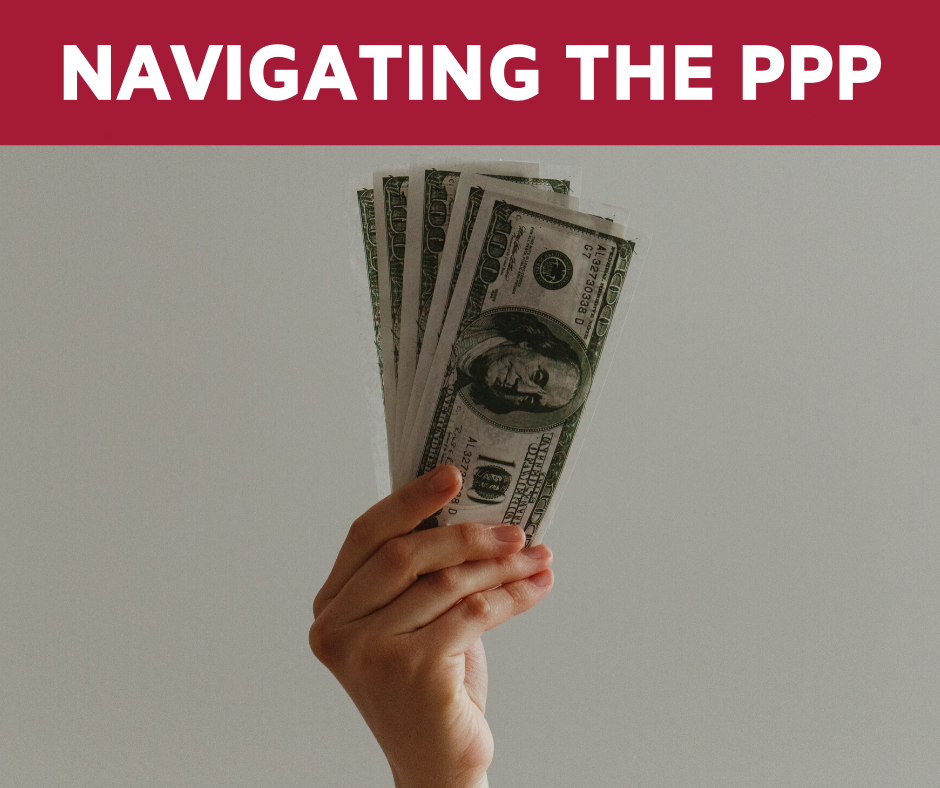
COVID-19 Funding through a PPP loan—Anything but simple
Our team at CFO Strategic Partners has been working intimately with close to 100 clients the past two weeks to navigate the challenging dynamics of the Paycheck Protection Program (PPP). Our CFO consultants have helped clients in many different industries and have been interacting with many different lending institutions. Most clients were initially hopeful that this process would be simple and funds could be accessed quickly. Based on the experience of our CFO consulting firm these last two weeks, the PPP process is not simple, not consistent and not timely.

HOW IT WAS SUPPOSED TO BE
In order to assist small businesses during this turbulent time, the federal government approved unprecedented levels of funding. For example, the Paycheck Protection Program (PPP) is part of the $2 trillion Coronavirus Aid, Relief, and Economic Security (CARES) Act, which consists of $349 billion in government-backed loans. Although this sounds promising to the 30 million small businesses in the United States, the process to date has been neither promising nor productive.
The government’s initial advice to small business owners (less than 500 employees) was to apply with any of the 1,800 SBA (Small Business Administration) lenders or through any participating federally insured depository institution. A fairly simple application form was provided along with a few instructions and FAQs. This appeared simple, and many businesses were hopeful they would receive funds quickly.
HOW IT ACTUALLY WAS
Based on this directive, small businesses across the country immediately contacted their banking partners with whom many had long standing personal and commercial banking relationships, only to discover that most banks were not accepting applications and no timeline was communicated as to when or if they would begin doing so. A few larger banks were able to quickly build new technology platforms in order to accept applications, while many other lenders were unable to sufficiently reconcile the details of the program in order to do the same. They told their customers that further guidance was needed from the U.S. Treasury Department and the SBA as they were concerned about the risk to themselves and their customers if they accepted applications that may later be deemed as incomplete or incorrect. In their view, the details provided to them were insufficient to process applications.
Panic among small business owners set in. Most banks were not accepting PPP loan applications, and the few who were decided to only accept them from their preexisting customers, leaving many small business owners with nowhere to apply. As the few larger banks who had been taking applications began touting the volume and total dollars of loan applications they were accepting, many small business owners began to believe they were going to miss the opportunity to receive these vital funds. To compound the initial panic, a few business owners reported they had been “approved,” and speculation began to spread about how quickly the funds might be depleted, causing many business owners to feel helpless and late to the party.
Those who were fortunate to be able to apply quickly learned the process was anything but simple. When the application form was released, many were initially encouraged to discover that it was only four pages long and only two of those needed to be completed by the applicant. However, when organizations began actually completing the process, they had more questions than answers. To further complicate the situation, every bank had a different application process and was requesting dramatically different supplementary information from their applicants. While one bank’s process required only the four-page application along with a few documents such as 941s, 940s and tax returns, another bank’s process required W-2s, PPP loan worksheets and extensive payroll summary documents. Various banks quickly created their own PPP loan worksheets, but many of those only created more questions and confusion. For example, some worksheets appear to require health insurance and retirement benefits to be included in the $100,000 salary cap, while others do not. Answers to these questions, and details contained in these applications, have a significant and direct impact on the level of funding a company can request and obtain.
HOW WE CAN HELP
Our team of part-time CFOs at CFO Strategic Partners has spent the past two weeks collaborating on these issues and helping close to 100 clients navigate the PPP loan process. We have internal knowledge of the banks that are accepting applications and, as importantly, insight on those that are stating they are accepting applications but are not yet submitting to the SBA. We are creating and continually updating strategies with each of our clients as to where and how they should apply. We are also assisting clients to complete the applications in a way that helps ensure they will get the highest level of financial support they need during this critical time.
Nothing about applying for the PPP loan has been simple, and that is not likely to change soon. The information and steps being rolled out to obtain the funding are changing daily. The team at CFO Strategic Partners is on the cutting edge of gathering, deciphering and executing the steps necessary to ensure our clients are receiving the maximum amount of funding available. The next phase for CFO Strategic Partners will be ensuring that, of the proceeds obtained, our clients will receive the maximum amount of eligible forgiveness. Through our CFO services, will continue to be diligent in our efforts to internally share knowledge and best practices, ensuring each of our clients is able to receive and keep the levels of funding they need to survive this turbulent time.
Our knowledge and expertise in the PPP loan process has further highlighted the value our collaborative approach to CFO consulting brings to our clients.
For many small businesses, this is a very uncertain and emotionally challenging time. CFO Strategic Partners can help. With valuable experience in a wide variety of industries, our Orlando CFOs are constantly collaborating throughout each day to ensure our clients are receiving the full benefit of our collective knowledge and expertise. This combination of exceptional talent puts us on the forefront of guidance and financial leadership to each of the small companies we serve. After receipt of the funding, we have the knowledge and expertise needed to strategize and ensure the largest amount possible is excluded from repayment and that those resources are wisely put to work in the organization. Whether you need short-term assistance to survive this difficult time or long-term assistance to ensure your company thrives after things return to normal, we have the on-demand CFO team in place to help.
You do not have to go through this unprecedented time alone. If your small company could benefit from the leading edge knowledge of an experienced CFO on an outsourced, on demand basis visit us at www.cfosp.com, email us at admin@cfosp.com or call us at 407-426-8288 to learn more.
NOTE: Given the current evolving economic climate, CFOSP is publishing more frequent communications on this topic based on what our clients are experiencing and our firm’s expertise. Stay tuned for updates or click here for more content on this topic.

